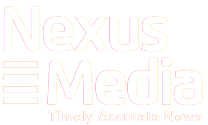The Uganda National Meteorological Authority (UNMA) has warned of possible heavy rainfall in the coming months as a result of El Niño impacts over the East African region.
In a circular released on August 5th, UNMA noted that El Niño impacts are modulated by the Indian Ocean Dipole, and the interaction between the Indian Ocean and Pacific Ocean affects the rainfall amounts and patterns in Uganda.
Bob Alex Ogwang, the Acting Executive Director of UNMA, said the EI Nino event in Uganda is often associated with heavy (enhanced) rainfall.
“It should be noted that El Nino alone does not translate into rainfall but rather an effect that modulates weather patterns leading to increased rainfall over Uganda during the September, October, November, and December (SOND) rainfall season,’ said Ogwang.
Ogwang advised decision-makers and the general public to develop preparedness and response actions to manage the likely impacts associated with the EI Nino phenomenon.
“UNMA will keep monitoring the evolution of EI Nino and issue appropriate updates and advisories to users. UNMA is in the process of developing the September, October, November, and December (SOND), 2023 Seasonal Rainfall Outlook, which will be issued in the course of the month,” the circular reads in part.
According to the El Nino Southern Oscillation (ENSO) forecast, equatorial sea surface temperatures (SSTs) are above average in the central and eastern Pacific Ocean, indicating weak El Nino conditions.
El Niño is a climate event involving the periodic warming of sea surface temperatures (SSTs) in the central and east-central Equatorial Pacific Ocean. It occurs irregularly at intervals of 2–7 years, with an oscillating warming and cooling pattern.
Uganda first experienced El Nino in 2015, but not so much heavy rainfall was received.















